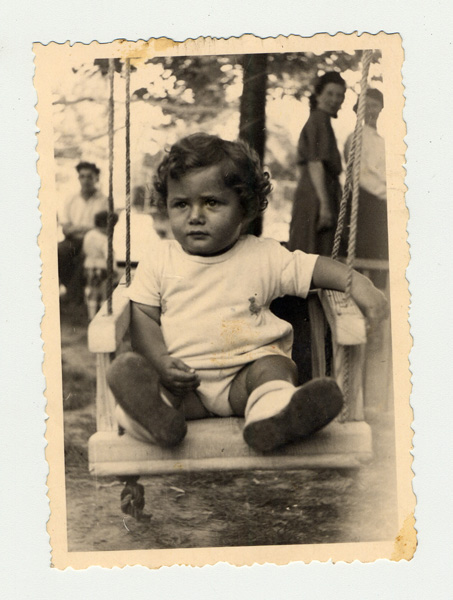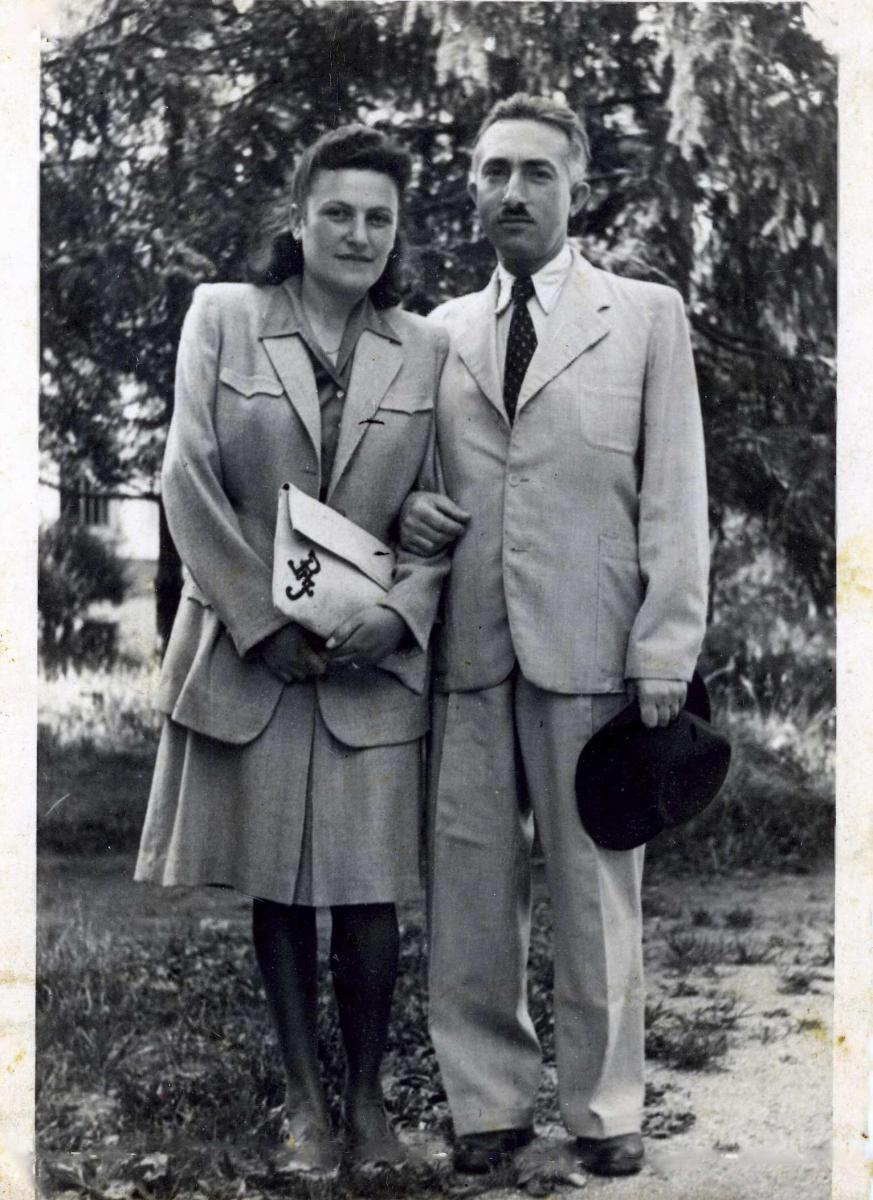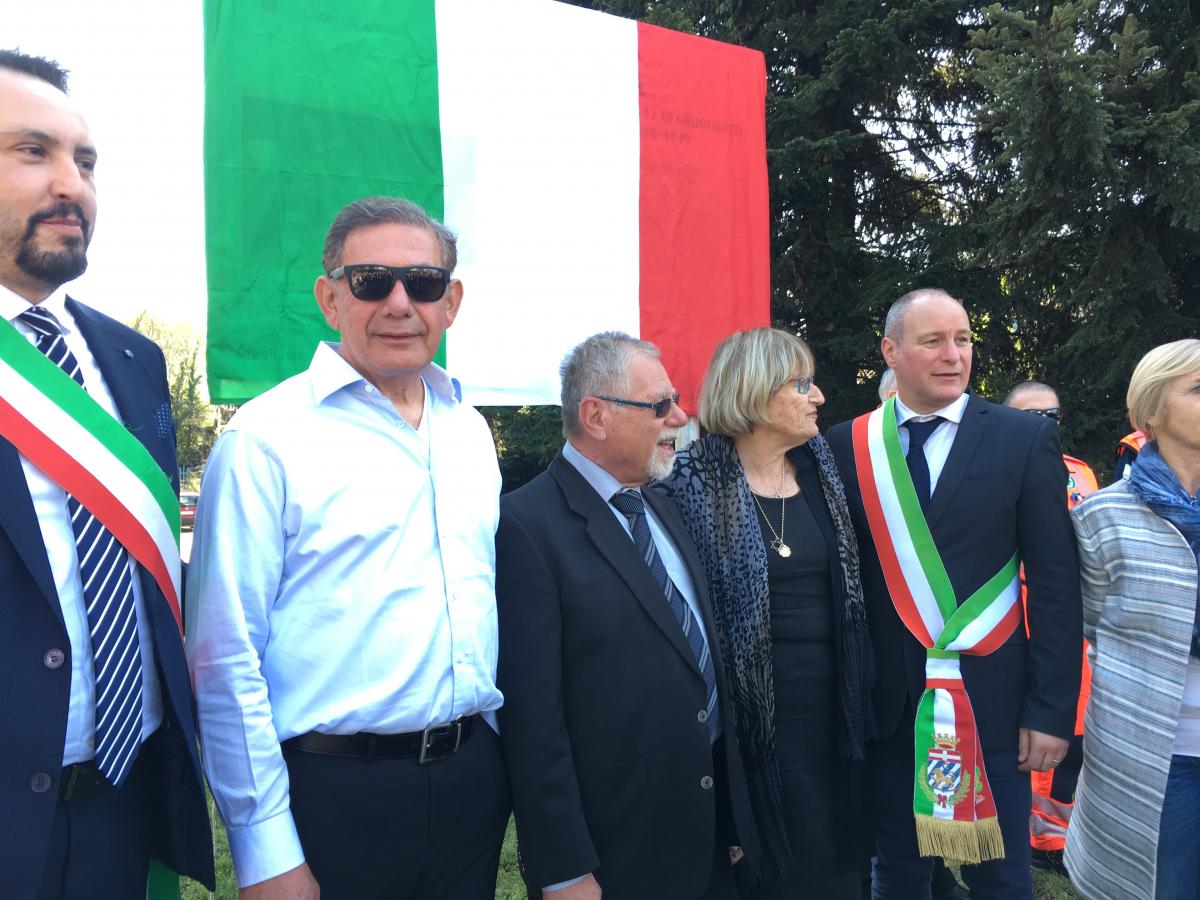The Children of Grugliasco
Peter Tannenbaum
In 2015 when the UN Archives did an exhibition for the 70th Anniversary of the United Nations, we displayed some archives of the United Nations Relief and Rehabilitation Administration (UNRRA). Included among them was a picture of young Peter Tannenbaum, and a letter from his father to the Director of UNRRA. The Tannenbaums had survived the Holocaust, and were living in an UNRRA-administered refugee camp in Grugliasco, Italy, where Peter had just been born.
 Peter’s father was seeking the assistance of UNRRA to have his family resettled in the USA. Although they were eventually resettled, it was in Uruguay, not the USA. Peter however, eventually moved to the USA to study, where he continues to live as Professor Emeritus of mathematics at Fresno State University.
Peter’s father was seeking the assistance of UNRRA to have his family resettled in the USA. Although they were eventually resettled, it was in Uruguay, not the USA. Peter however, eventually moved to the USA to study, where he continues to live as Professor Emeritus of mathematics at Fresno State University.
When Italian journalist Alessandra Baldini discovered the letter and picture on display at the United Nations, she tracked down Peter Tannenbaum, who until that point had no idea that part of his family’s history was being preserved in the UN Archives.
Alessandra Baldini has since written a series of excellent articles on the Tannenbaum’s story and even succeeded in bringing Peter to the UN Archives to spend a day reviewing the archives of UNRRA, particularly those of Camp 17 in Grugliasco, Italy where he was born. Read more:
#UN70: in 1947 like today, the S.O.S. of a refugee family in Grugliasco (Turin), 4 Nov 2015
Then and now: a tale of statelessness from 70 years ago, 27 Dec 2015
Then and now (II): life in a refugee camp in Italy 70 years ago, 29 Dec 2015
Robert Eli Rubinstein
Of the many children born in Displaced Persons Camp #17 in Grugliasco, Italy, the United Nations archives knows of only one who has written about it. Robert Eli Rubinstein describes in An Italian Renaissance: Choosing Life in Canada, his parents’ journey from Hungary to Auschwitz, then back through Hungary only to find their property confiscated by neighbours, to an UNRRA refugee camp in Italy, and eventually re-settled in Canada. It is a beautiful homage to his parents which both tells their stories and his own story of searching for his origins. This search brings him back to the former camp in Grugliasco.
Of profound importance to his narrative, is the work the historian Sara Vinçon. Sara’s thesis, Vite in transito: Gli ebrei nel campo profughi di Grugliasco (1945-1949)/Lives in Transit: Jews in the Displaced Persons Camp of Grugliasco (1945-1949), was published in 2009 and represents if not the only, certainly the preeminent academic work on the history of the Grugliasco Camp. Sara’s research into the lives of those who transited the camp was critical to Robert’s understanding of his own story and allowed him to fill in many gaps. It also laid the groundwork, along with the tremendous support of Maria Teresa De Palma, archivist of the Municipality of Grugliasco, for a meeting some 70 years later of the ‘Children of Grugliasco’ in April, 2017.
Although Robert was unable to meet with the other Children of Grugliasco, he did come, upon the invitation of Alessandra Baldini to the UN Archives in May for a visit where he was able to view a selection of UNRRA archives about Grugliasco. Of particular interest to him was a translated article from the Paris newspaper "Combat", on children in the camp that he was born in. It was accompanied by a memo signed by camp director W.J.C. Davidge, whom Robert had heard his mother speak of many times. He was amazed and touched to be reading and holding the original records which documented an incredible period of his parents’ post-war life and his own origin story.
Click here to see the photographs of the Grugliasco Camp that his parents brought with them when they relocated to Canada. (Image to right: parents Judit and Bela Rubinstein on their wedding day, June 9, 1947). Unlike most of the UNRRA photographs in the UN Archives, which were taken by professional UNRRA photographers and document life in the camps and UNRRA’s work, the Rubinstein’s photographs are much more personal.
Just as he does in his book, when we met him at the UN archives, Robert focused more on the story of his parents rebuilding their lives than their traumatic wartime experiences. It is the fact that they could start over and become successful, empathetic and contributing members of society which is the aspect of the refugee experience that he wished to reinforce.
His parents, like millions of others, endured unimaginable pain, loss, and suffering during and after the war. Despite that experience however, they were, like millions of others, through their own strength and resilience able to rebuild their lives and add in incredible and meaningful ways to the new lands they found themselves in.
Each survivor’s success story is entirely a testament to their own perseverance. However, having an organisation such as UNRRA on the ground to provide a safe, if temporary, place for the stateless and displaced and facilitate their resettlement, is a reminder of the international community’s potential in the face of such crises.
With the world in the midst of largest refugee crisis since the Second World War, we would be well advised to learn the lessons of UNRRA. Robert told us, having witnessed first-hand the positive effects that his parents had him, on their community and on their adoptive country, that he will always stand on the side of refugees.
Although UNRRA no longer exists as an organisation, the United Nations High Commissioner for Refugees (UNHCR) now performs the same function in assisting refugees around the world.
Children of Grugliasco
 After some 12 years, when Robert Eli Rubinstein and Sara Vinçon first started dreaming about a reunion of those children born in UNRRA Camp #17, it finally took place on 6 April 2017.
After some 12 years, when Robert Eli Rubinstein and Sara Vinçon first started dreaming about a reunion of those children born in UNRRA Camp #17, it finally took place on 6 April 2017.
The event was largely the result of the hard work of Maria Teresa De Palma, archivist of the Municipality of Grugliasco, but had tremendous support from Sara Vinçon, whose research provided information who the “Children” were, by Alessandra Baldini who covered, with great professionalism and a big heart, the story in the ONU Italia web site (see links below), and by Grugliasco Mayor Roberto Montà.
Peter Tannenbaum, Haim Frenkel, Felicia Wax and Sara Guttman, having travelled from around the world, gathered for the first time in 70 years on their childhood playground. The "Children of Grugliasco’s", Facebook group, offers the ability for other “Children” and interested people to join and connect. And the UNRRA archives themselves continue to offer a key resource to identify more children and families from Grugliasco as well as all the other UNRRA Displaced Persons camps that existed during the post-war period.
At the gathering, Grugliasco Mayor Roberto Montà and Francesco Casciano linked the history of the town to the current refugee crisis in Europe.
"Elena Loewenthal, cultural attaché at the Italian embassy in Israel, evoked 'a moving story and full of life. A beautiful story because life story, unthinkable in the aftermath of World War II tragedy.' Dario Di Segni, President of the Jewish community of Turin emphasized... 'a story not just consigned to the past but also challenges us today.'"
These "Children of Grugliasco" shared their recollections of Camp 17:
Peter Tannenbaum: "My parents never talked about the war, but loved to talk of their last three years in Grugliasco. My mother said were the three best years of their life and that they would never have gone, but in 1949 they closed the camp."
Haim Frenkel: "I was born here to a quirk of fate and consider myself to have a bit of Turin".
Felicia Wax: "With their stories, my parents taught me to love Italy."
Grugliasco: a refugee story from 70 years ago strikes a chord, 30 Aug 2016
Refugee children of WWII return to the playground of their infancy in Grugliasco, 2 Apr 2017
Grugliasco onora i bambini del Campo UNRRA 17; Sara, Peter, Felicia, Haim sul prato della loro infanzia, 7 Apr 2017
Thanks to Alessandra Baldini, Robert Eli Rubinstein and Sara Vinçon for sharing their hard work with us.

